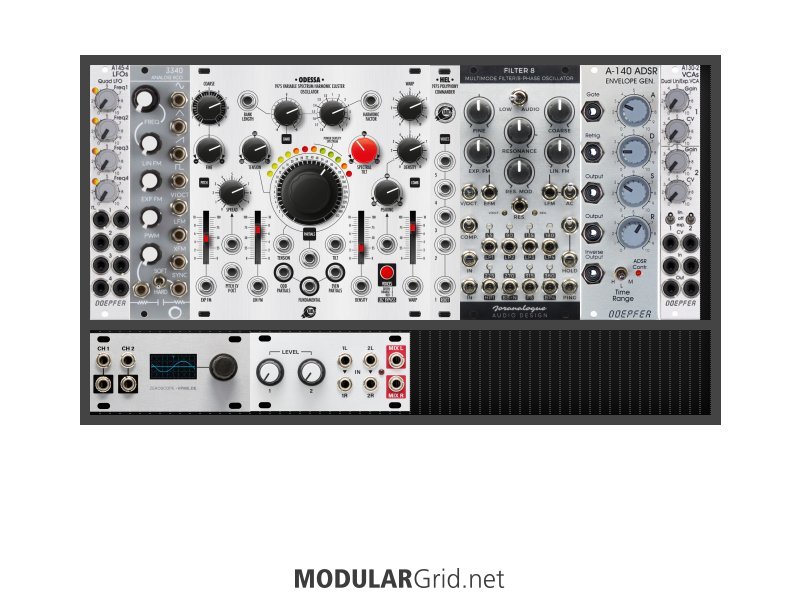case - imo poor choice for a starter case - as are all 'beauty cases'
good examples of starter cases are doepfer lc9 or tiptop mantis
why? because they are the best value for money cases out there and have been proven over years of service - they are not so small that they will be filled immediately and they are not so big that they cannot be moved, reasonably easily
beauty cases are great as extensions to larger cases - control skiff, sequencer skiff etc - but most experienced modular synthesists will point you towards a bigger case (at least to start with) so that you can find the modules that you want and the modules that you need to support them and leave space to expand (preferably 20-30%)
saying that you should not have any compatibility issues with modules that are not too deep (check this - especially the doepfer modules - 45mm and 50mm), power looks ok - are there enough power headers? (you can get flying extensions from intellijel if not)
in terms of power you should always leave at least 25-30% headroom (to account for inaccuracies and onrush needs) on all rails - otherwise you will get unexpected results - anything from lights flashing weirdly and then switching off to burning out power supply and/or module components
quite frankly the odessa/hel combination on it's own is too big for this size case - as are to a large extent multiple voices - it's difficult to fit 2 vcos and the support modules for them in such a small case not counting the size of odessa/hel
how are you intending to play this synth? iirc to take full advantage of the polyphony of odessa you really want 4 v/oct signals just for that one module - but no sequencing or midi-> cv converter in the case - iirc there is part of one included in the case, b ut yoou still need to buy a module to use it and iirc it only has 2 sets of v/oct gate outputs - so can only play 2 notes at once
you almost definitely will want way more in the way of vcas - 2 vcas is not really enough for a single mono voice of a vco and filter - especially once you start using vcas for more interesting purposes - modulating modulation and controlling volume not just note shape, compression, cross-fading and auto panning (to name a few uses for them) - with essential supporting modules such as polarizers and offsets which you have neither of
I would advise you to start again with a bigger case and work out what modules you want and what you actually need to support them and get that verified by people here as a workable synth - this will probably work out less expensive in the long run
when you do this it is a good idea to also specify what sort of music you want to make and what your budget is (not only the starter budget, but ongoing monthly/yearly)
and I speak from experience I started with a 72hp 6u case - I ran out of space within 6 months and case number 2 had to be bought, roughly 5 years on from that I have 6 cases with a total of roughly 1500hp - looking back if I'd bought case 2 first I may never have gone past it's 208hp (a mantis)
"some of the best base-level info to remember can be found in Jim's sigfile" @Lugia
Utility modules are the dull polish that makes the shiny modules actually shine!!!
sound sources < sound modifiers < modulation sources < utilities


